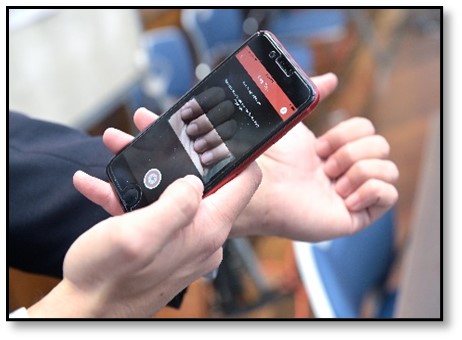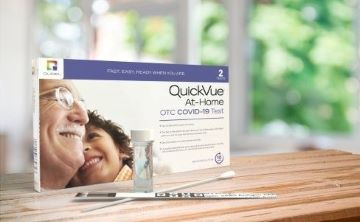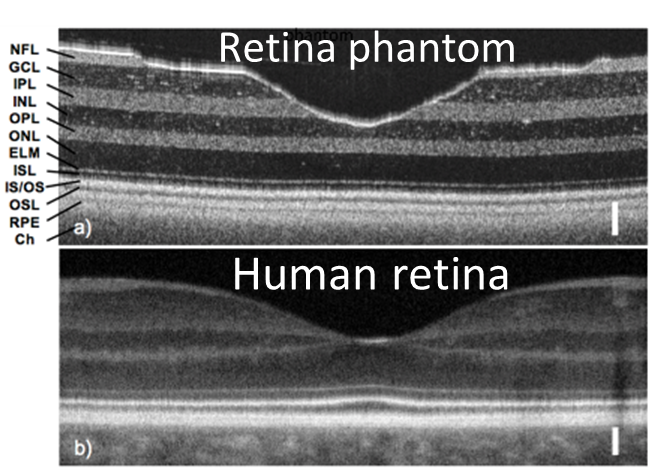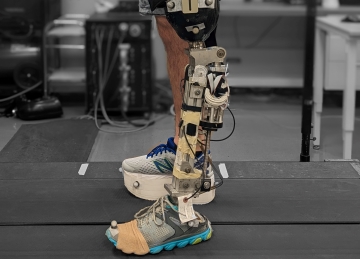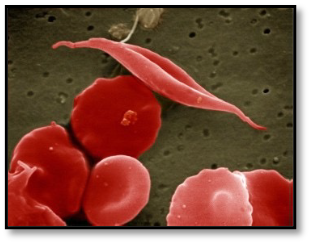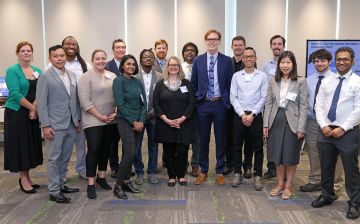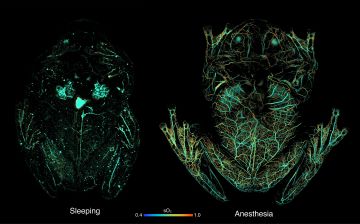Discoveries in Technology
Congressional staff visit NIBIB on June 27, 2023 to see technology demonstrations presented by NIBIB grantees. The demonstrations showcase the breadth of research supported by NIBIB. Demonstrations were given by Johns Hopkins University, Georgia Institute of Technology/Emory University, North Carolina State University/University of North Carolina at Chapel Hill, the U.S. Food and Drug Administration (FDA), and NIBIB’s Intramural Research Program MATRICES lab and BETA Center. The congressional staff are visiting at the invitation of the American Institute for Medical and Biological Engineering (AIMBE).
This tour was at the invitation of AIMBE. AIMBE is a non-profit, honorific society that brings together academia, industry, government, and scientific societies to advance medical and biological engineering. AIMBE’s mission is to recognize excellence, advance the public understanding, and accelerate medical and biological innovation for the benefit of society.
Demonstrations
Wilbur Lam, MD, PhD, Professor and W. Paul Bowers Research Chair, Department of Pediatrics, Wallace H. Coulter Department of Biomedical Engineering
Emory University and Georgia Institute of Technology, Atlanta, GA
Erika Tyburski, CEO and Co-founder at Sanguina
Sanguina, Inc, Peachtree Corners, GA
Anemia, characterized by low hemoglobin levels, is the most common blood condition, affecting approximately 2 billion people worldwide. Anemia screening and management typically requires visiting a clinical setting to receive a blood test called a complete blood count. Visiting a clinic for blood testing poses an inconvenience to those with anemia, particularly in low-resource settings where medical resources are limited. Researchers will demonstrate a smartphone app that gives a hemoglobin level estimate by analyzing an image of fingernail beds. The app also offers tools for tracking symptoms, mood, supplements, and lab results from traditional blood testing. Given the global prevalence of anemia and the ubiquity of smartphones, the app has the potential to transform the management of anemia domestically and abroad.
Wilbur Lam, MD, PhD, Professor and W. Paul Bowers Research Chair, Department of Pediatrics, Wallace H. Coulter Department of Biomedical Engineering
Julie Sullivan, Program Director, Center for the Advancement of Diagnostics for a Just Society
Emory University and Georgia Institute of Technology, Atlanta, GA
NIBIB leads the RADx Tech program, part of the NIH RADx initiative, to speed innovation in the development and deployment of technologies for COVID-19 testing. The RADx Tech Test Validation Core at the Atlanta Center for Microsystems Engineered Point-of-Care Technologies (ACME POCT) – a center spanning Emory University, Georgia Tech, and Children’s Healthcare of Atlanta – was established to support and conduct independent validation of COVID-19 diagnostic technologies. The center has evaluated more than 100 different tests and will continue to validate diagnostics including multiplex tests (a single test that detects multiple respiratory viruses), along with mpox and hepatitis C diagnostics.
Axel Krieger, PhD, Assistant Professor in the Department of Mechanical Engineering
Justin Opfermann, MS, PhD Student
Michael Kam, MS, PhD Student
Idris Sunmola, MS, PhD Student
Johns Hopkins University, Baltimore, MD
Increased autonomy has transformed fields such as manufacturing and aviation by drastically increasing efficiency and reducing failure rates. While pre-operative planning and automation have also improved the outcomes of surgical procedures involving rigid anatomy, practical considerations have hindered progress in soft-tissue surgery mainly because of unpredictable shape changes, tissue deformations, and motion. This autonomous robot performed bowel surgery with minimal assistance from surgeons in preclinical studies and outperformed expert surgeons in key metrics such as number of errors and consistency. These smart surgical robots have the potential to democratize health care by making quality surgery ubiquitous and by minimizing the incidence of corrective surgery, reducing health care costs.
Daniel X. Hammer, PhD, Deputy Director, Division of Biomedical Physics (DBP)
Anant Agrawal, PhD, Research Electrical Engineer
William Vogt, PhD, Assistant Director, DBP
Sandhya Vasudevan, PhD, Staff Fellow
Joshua Pfefer, PhD, Program Leader, Optical Spectroscopy and Spectral Imaging
U.S. Food and Drug Administration, White Oak, MD
Phantoms are physical models that are often used in conjunction with biomedical instruments. In the Office of Science and Engineering Laboratories (OSEL), the research arm of FDA’s Center for Devices and Radiological Health, phantoms are a type of regulatory science tool that are used to aid the regulatory assessment of medical devices. Researchers will highlight several phantoms that have been developed for use in the fields of retinal imaging, pulse and cerebral oximetry, and photoacoustic devices.
He (Helen) Huang, PhD, Jackson Family Distinguished Professor, Director of the Closed-Loop Engineering for Advanced Rehabilitation (CLEAR) Core
Varun Nalam, PhD, Post Doctoral Fellow
Brendan Driscoll, PhD Student
North Carolina State University, Raleigh, and the University of North Carolina at Chapel Hill, Chapel Hill, North Carolina
Symbiotic robotic prostheses should not only restore natural walking in individuals with leg amputations but also maintain balance and stability when internal or external balance perturbations occur. Research addressing balance and stability has been limited but is urgently needed as amputees are prone to fall. This lab has created innovative solutions in robotic prostheses to improve walking stability and balance in lower-limb amputees. The researchers have developed an ankle prosthetic that relies on the user’s residual muscles – and the electrical signals they generate – to help improve postural stability of amputee users when anticipated postural perturbations occur (e.g., playing sports or picking up a small child). The researchers have also shown that a novel fault-tolerant control for a robotic knee prosthesis can prevent walking balance disruption caused by intrinsic errors. This research could improve the quality of life for people with limb loss.
Manu Platt, PhD, Director of BETA Center and Associate Director of DEIA
Intramural Research Program, NIBIB, Bethesda, Maryland
The NIBIB BETA Center is an NIH-wide resource that brings a focused engineering approach to accelerate the development, validation, and dissemination of cutting-edge technologies to address urgent national and global health needs. Specialized technology areas include biomedical imaging, biosensing, engineered/synthetic biology, nano/biomaterials, AI, modeling, computation, and informatics. Dr. Platt’s NIBIB lab is called MATRICES (for Mechanics And Tissue Remodeling Integrating Computational and Experimental Systems). Focuses of the lab include pediatric strokes in sickle cell disease, extracellular matrix remodeling and arterial mechanics, systems biology and predictive medicine, label-free MRI, computational hemodynamics, and integration of matrix proteolytic networks. This research could enable earlier, more effective detection and treatment of heart disease and stroke risk.


